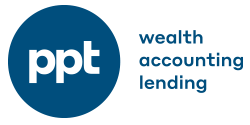Unwinding the Pandemic
The National Plan, the road map out of COVID-19, does more than provide greater freedoms at 70% and 80% full vaccination rates, it withdraws the steady stream of Commonwealth financial support to individuals and business impacted by COVID-19 lockdowns and border closures. We look at the impact and the support that remains in place.
For individuals
The COVID-19 Disaster Payment offered a lifeline to those who lost work because of lockdowns, particularly in the ACT, New South Wales, and Victoria where the Delta strain of the virus and long-term lockdowns had the greatest impact.
In late September, the Treasurer announced that the Disaster Payment will roll back as states and territories reach vaccination hurdles on the National Plan. Over $9 billion has been paid out to date on Disaster Payments and at 70% and 80% full adult vaccination, the disaster, apparently, is over.
At 70% full vaccination in your state or territory
In the first week a state or territory reaches 70% full adult vaccination, the automatic renewal that has been in place will end and individuals will need to reapply each week that a Commonwealth Hotspot remains in place to confirm their eligibility. The COVID-19 Disaster Payment will not necessarily end, but anyone currently receiving the payment will need to reconfirm that they meet the eligibility criteria, including living or working in a Commonwealth declared hotspot.
Given that the time gap between 70% and 80% full vaccination might be as little as two weeks in some regions, the impact of the 70% restrictions might be a moot point.
At 80% full vaccination in your state or territory
In the first week a state or territory reaches 80% full adult vaccination, the COVID-19 Disaster Payment will phase out over a two week period before ending completely.
| Trigger | Disaster Payment per week |
| <70% vaccination* | $750 – lost 20 hours or more for that week
$450 – lost at least 8 hours of work $200 – on income support and have lost at least 8 hours of work |
| 70% vaccination* | Automatic renewal ends |
| 80% vaccination | Payment reduced from first week |
| Week 1 | $450 – lost at least 8 hours of work
$100 – for those on income support who have lost at least 8 hours of work |
| Week 2 | $320 – lost at least 8 hours of work |
*First week population +16 years of age reaches vaccination target
Those needing financial support will no longer be eligible for the Disaster Payment, regardless of whether a Commonwealth hotspot is in place, and instead will need to apply for another form of income support such as JobSeeker. Unlike the disaster payments, JobSeeker and most other income support payments are subject to income and assets tests.
The Pandemic Leave Disaster Payment, for those who cannot work because they need to self-isolate or care or quarantine, or care for someone with COVID-19, will remain in place until 30 June 2022.
Support for business
Each state and territory manages lockdown and financial support to businesses impacted by COVID-19 lockdowns and border closures differently. The way in which support is withdrawn will depend on how support has been provided and the extent of Commonwealth support.
Victoria
The Victorian Government has distributed grants to business jointly funded with the Commonwealth. For many of these grants, funding has been topped up in line with lockdown extensions.
The small business hardship fund providing one-off grants of $20,000 for businesses that have suffered a 70% or more decline in turnover and were not eligible for other grants or funding, will reopen (see the BusinessVictoria website for details).
The Business Costs Assistance Program will provide automatic top-ups to existing recipients across October and into the first half of November (two fortnightly payments between 1-29 October on a rising scale). Businesses that remain closed or severely restricted between 70% and 80% double dose will receive an automatic payment for the period from 29 October to 13 November.
Licensed hospitality venue fund recipients will also receive weekly top-ups in October of between $5,000 and $20,000, stepped according to venue capacity. Between 70% and 80% double dose, payments for licensed premises in metropolitan Melbourne will be reduced by 25%, and in regional Victoria by 50%.
Victoria is not expected to reach the 70% vaccination target until the end of October, and 80% in early to mid-November. You can find Victoria’s broad road map here.
National
The National Plan stipulates that state and territory borders are to reopen at 80% double vaccination in that state or territory but this will depend on health advice at the time.
Generally, international borders will reopen in states and territories at 80% double vaccination with Australian and permanent residents able to quarantine at home for 7 days. Unvaccinated travellers will need to stay in hotel quarantine for 14 days. Commercial flights will also resume for vaccinated Australians with Australia expected to implement a ‘red light, green light’ system similar to the UK to designate safe countries.
For other regions such as South Australia and the Northern Territory, borders are expected to reopen at 80% double vaccination but with some nuances flagged. The Western Australian Government however has stated that it will announce an easing of border restrictions once an 80% double vaccination has been achieved for those over 12 years of age.
SME lending options
While there is likely to be an economic rebound when restrictions ease across the country, for many, a funding gap will remain between the assistance provided by Government grants and viable trading conditions.
The expanded SME recovery loan scheme took effect on 1 October 2021. Under the scheme, the Government will guarantee 80% of loan amounts to businesses that have been adversely impacted by COVID-19.
The lending terms, repayment, and interest rates are set by the lenders but cannot be backed by residential property, that is, if the Government is underwriting the loan, lenders cannot ask business owners to use their home as security. However, Directors guarantees are likely to be required.
Under the scheme, lenders can provide:
- A repayment holiday of up to 24 months
- Loans of up to $5m
- Loan terms of up to 10 years, and
- Secured and unsecured loans
The recovery loans can be used to refinance existing loans, purchase commercial property, purchase another business, or working capital. But, cannot be used to purchase residential property, financial products, lend to associated entities, or lease, rent, hire or hire purchase existing assets that are more than half way into their effective life.
The loan scheme is generally available to solvent businesses with a turnover of up to $250m, have an ABN, and are a tax resident of Australia. Loans remain subject to lending conditions and generally the lenders will look to lend to viable businesses where it is clear that they can trade their way out of the impact of COVID-19 or the assets of the business make the break-up value attractive.
If you default on your loan, you cannot simply walk away from it. The Government is guaranteeing 80% of the lender’s risk not your debt. Director guarantees are still likely to be required and for many loans, it will be secured against a business asset. On the plus side, interest rates are very attractive right now and many of the lenders are providing a repayment holiday of up to 24 months and in some cases, existing debt can be bundled into the loan arrangements.
Want more information?
To learn how this may impact your circumstances call PPT on (03) 5331 3711.
DISCLAIMER: The material and contents provided in this publication are informative in nature only. It is not intended to be advice and you should not act specifically on the basis of this information alone. If expert assistance is required, professional advice should be obtained.


